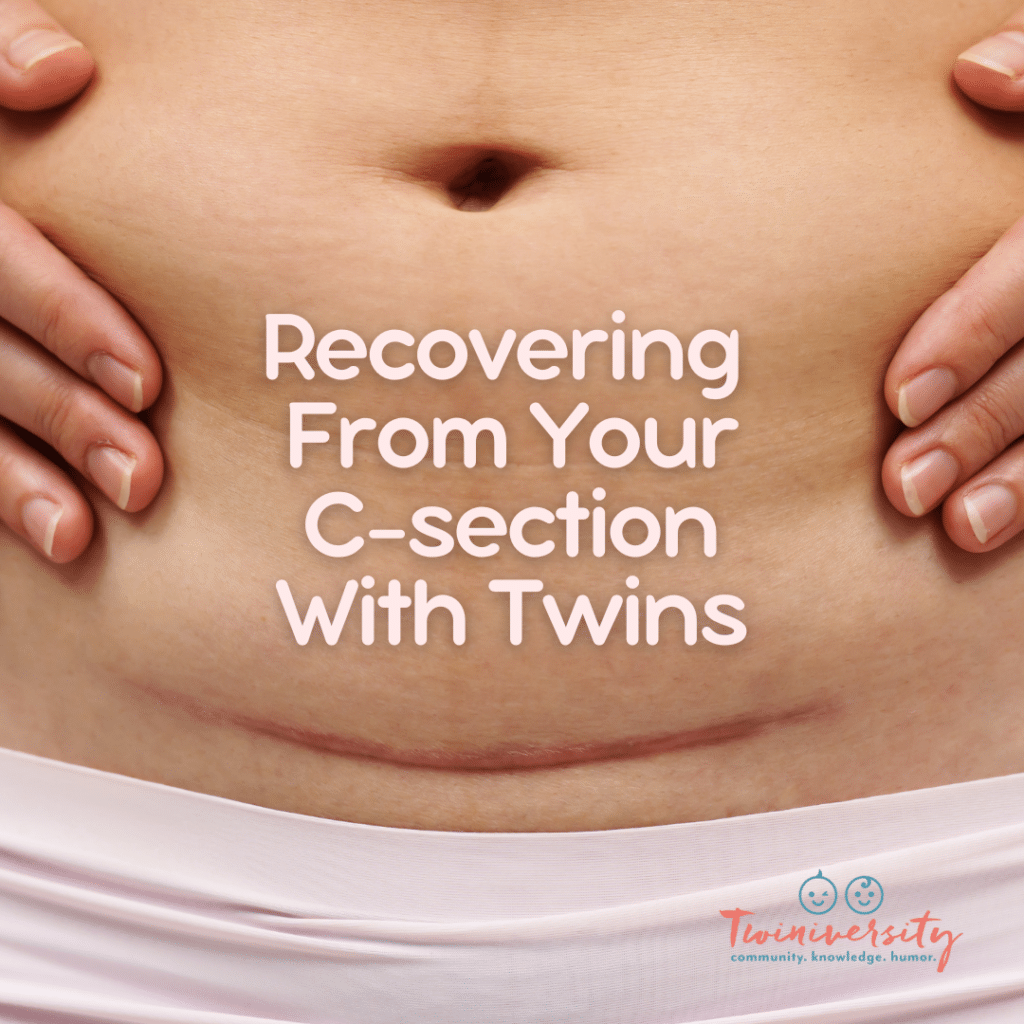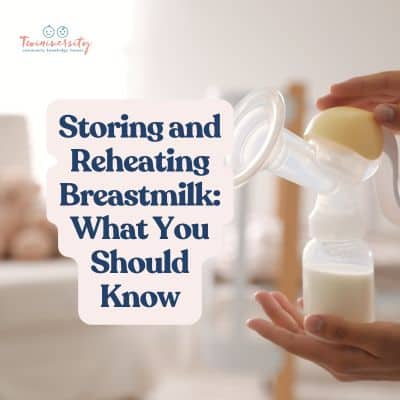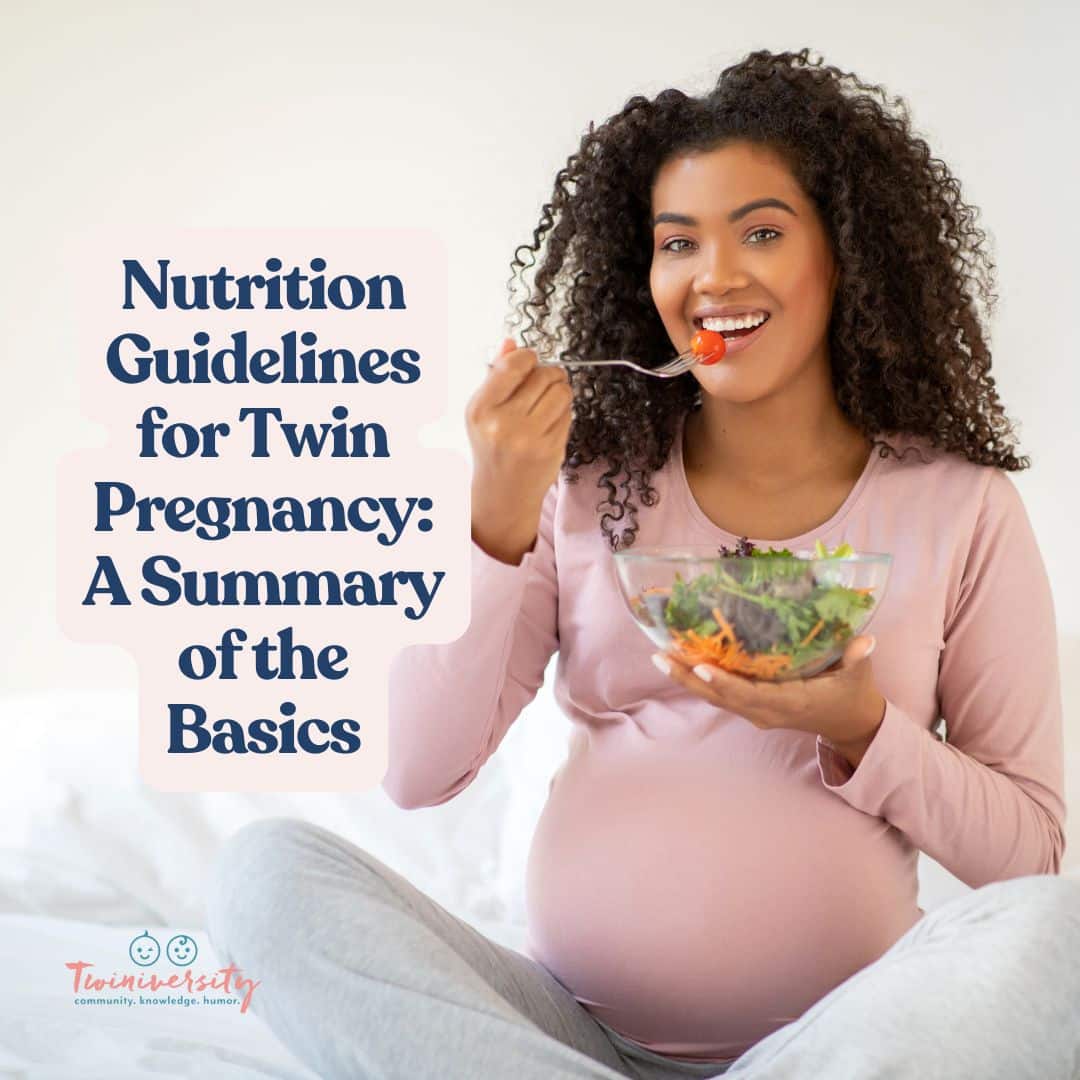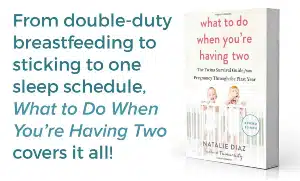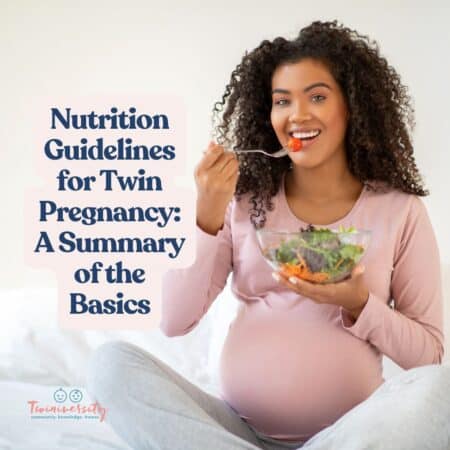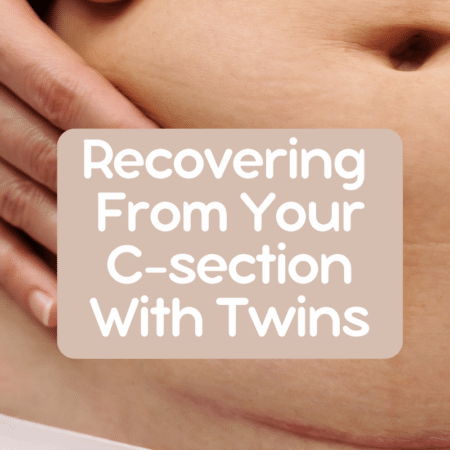
Whether you had planned c-section or an emergency c-section, the recovery can feel extra complicated with twins. We’ve been there and we know the struggle. So below you’ll find an overview of the first two months of your c-section recovery.
Disclaimer: All content on this website, including medical opinions and any other health-related information, is for informational purposes only and should not be considered to be a specific diagnosis or treatment plan for any individual situation. Use of this site and the information contained herein does not create a doctor-patient relationship. Always seek the direct advice of your own doctor in connection with any questions or issues you may have regarding your own health or the health of others.
As a first time mom, I was not prepared for how taxing the initial days following my c-section would be. Oddly enough, I had talked to close friends and family members who had c-sections before thinking it would help me mentally prepare.
But with some things, no amount of preparation can fully prepare you for the reality that lies ahead. And that’s exactly how I felt with my c section with twins.
While my c-section was somewhat of an emergency due to preeclampsia symptoms, the surgery itself went as expected. And due to the spinal tap, I felt no pain during the actual birth (though I was shaking uncontrollably).
But little did I know, that was only the beginning. In my hospital bed a few hours later, I remember thinking to myself: “Dang, I didn’t know it was going to be THIS hard.”
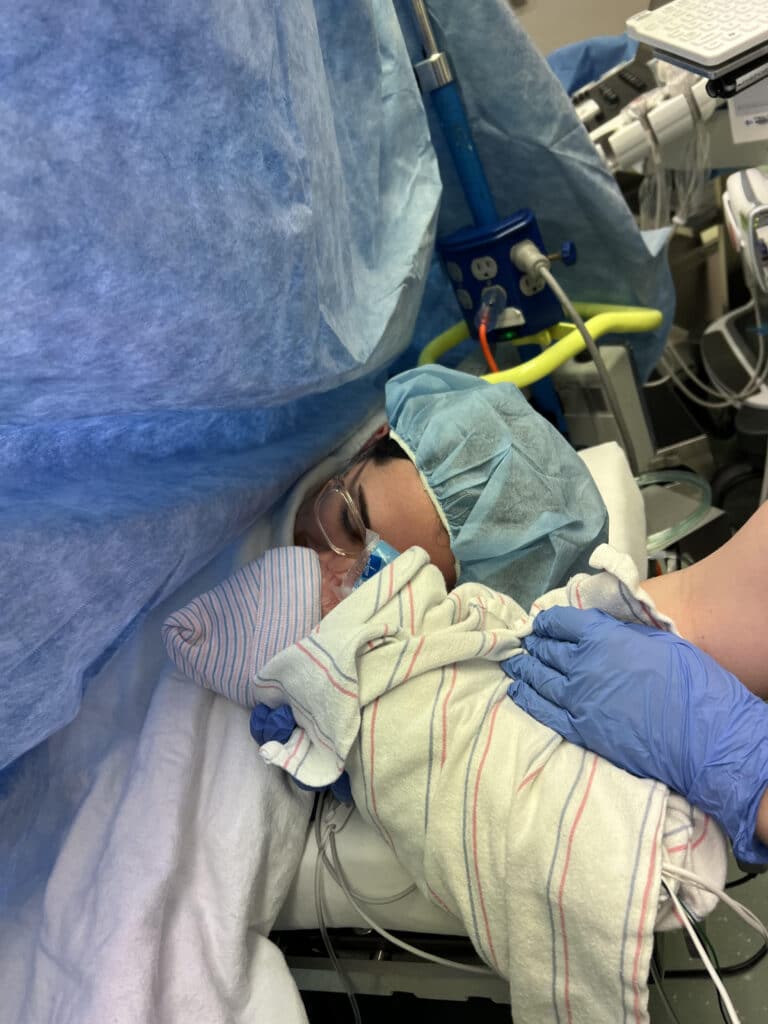
If you’ve had a c-section yourself, maybe you feel similarly. But my hope is that some of these tidbits of advice make your journey a little smoother–and a little less lonely.
C-section recovery: the first 48 hours
Here are some things that you may experience in the first 24 hours after your c-section with twins:
Pain in your shoulder (aka “shoulder tip pain”)
When you get the spinal tap (spinal anesthesia) for your c-section, this can sometimes cause a lingering pain in your shoulder area in the hours after surgery. Research estimates that about 1 in 2 c-section patients experiences this localized pain. For me, this pain was even more uncomfortable than the incision itself (at least while I was laying down). And it lasted for the first 2 days after surgery.
Shoulder tip pain is thought to be caused by a few potential culprits: irritation of the diaphragm caused by blood and amniotic fluid, trapped gas, the positioning of the body during surgery. One study shows that auriculotherapy (basically acupuncture on your ear) can help provide relief.

Stressing out with your infant twins? Let us help! Learn what to expect in the first year with twins, including tips, tricks, and advice from real twin parents who have been there. Click here to learn more… and while you’re at it, check out our twin parent coaching services and Twiniversity shop!
Your c-section incision
The external incision you see on your skin will likely be closed with Steri-strips. You’re supposed to leave the Steri-strips be and let them fall off on their own (within 7 days).
While the incision may feel tender, it should not be leaking any blood or fluids. If it is, you’ll want to tell your doctor right away. The sensation of the incision can also be painful and uncomfortable, especially when you move. This pain will usually reach its peak in the first 18 – 36 hours after your c-section since that’s when the spinal anesthesia wears off.
When you have to laugh, cough, or sneeze, place a pillow over your incision and apply a slight amount of pressure. This will help lessen the discomfort and protect your incision.
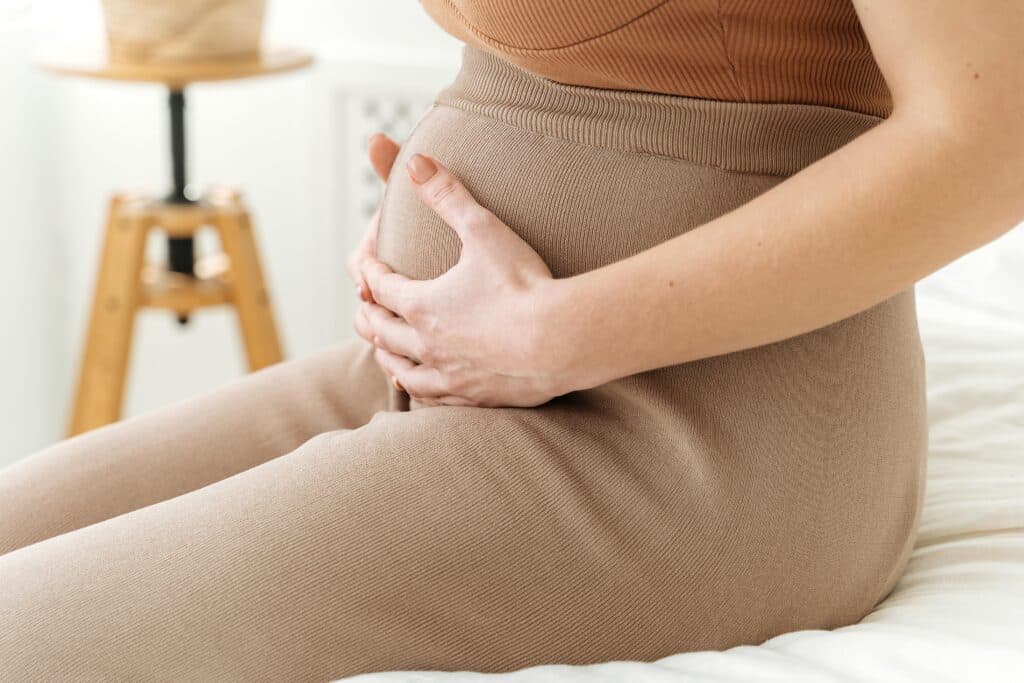
For me, the incision generally felt okay as long as I was laying down. But when I would move, it felt like the c-section scar was on fire. So painful. But this is normal because the damaged nerves in your skin and internal tissues are healing.
As far as showering, you are typically able to shower 24 hours after your surgery. But you won’t want to directly clean the incision yet. Instead you can just let the water run over it indirectly.
Your uterus
Once the anesthesia wears off, your uterus may feel tender and sensitive. You may also feel small contractions. These contractions help your womb slowly shrink back to its normal size (and also control some of the bleeding).
If you gently press down above your pubic bone, you’ll feel a solid almost ball shape. This is your enlarged uterus.
Nausea and vomiting
Research estimates that up to 80% of women experience nausea and vomiting after their c-section.
These symptoms are even more noticeable if you have preeclampsia and are medicated with magnesium sulfate. This can make it difficult to keep fluids (even water) and food down in the first several hours after delivery.
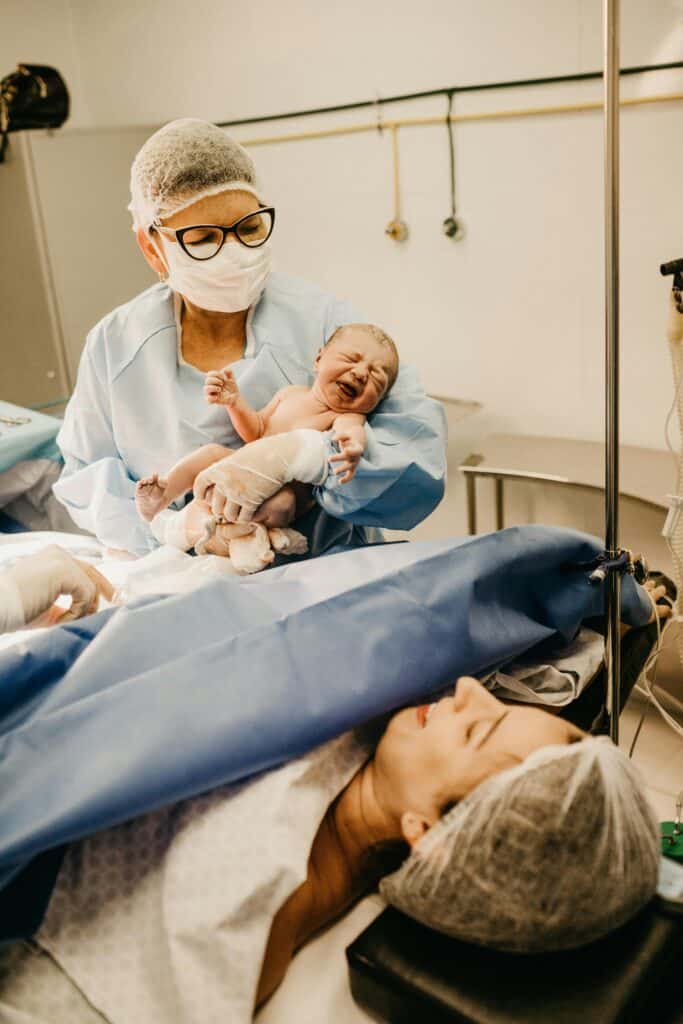
A bloody mess
Post c-section bleeding can be very heavy (like wayyyy heavier than your heaviest period). This may feel super alarming at first (especially when you see larger clots falling out). In general, this heavy bleeding is normal.
But if you are passing golf-ball sized clots or larger, tell your doctor right away. My post c-section nurse literally had to put her hands inside of me, press down on my uterus, and push some of the leftover blood and uterine contents of me (ouch!).
Moving your body
Despite just undergoing a major surgery (cutting through 7 layers of tissue), you will be told to start moving within the first 8 – 24 hours.
One of the reasons is to help with circulation so you don’t develop blood clots (especially in your legs) after surgery. Overall, gentle movement like walking is also supposed to help your body heal more quickly. Even though you are supposed to be moving your body, be sure you avoid lifting anything heavier than your twinnies.
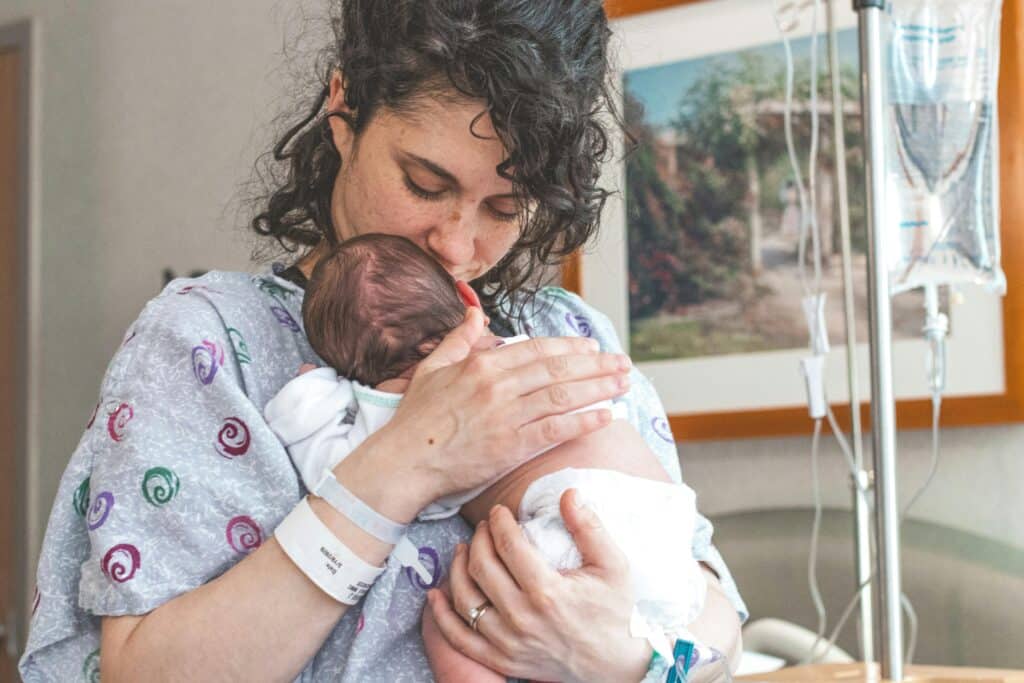
C-section recovery – the first week after
Some pesky c-section symptoms (like shoulder pain and nausea) will go away after the first 24 – 48 hours. But others will linger on into the first week.
Here’s a look at your recovery in the first week after your c-section with twins:
Delayed milk supply
If you are nursing or pumping, don’t be alarmed if it takes longer for your milk supply to come in. C-section or not, for the first few days after delivery, you will only get colostrum out. Then, typically, a mother’s milk will come in around 3 – 5 days after birth. But for women who have a Cesarean, it may take even longer than that for their milk supply to come in.
If you are struggling with pumping or nursing after your c-section, it’s a good idea to get help from a lactation consultant as soon as possible! They can help you not just with latching techniques but with pumping schedules, pumping strategies to help your supply, and so much more.
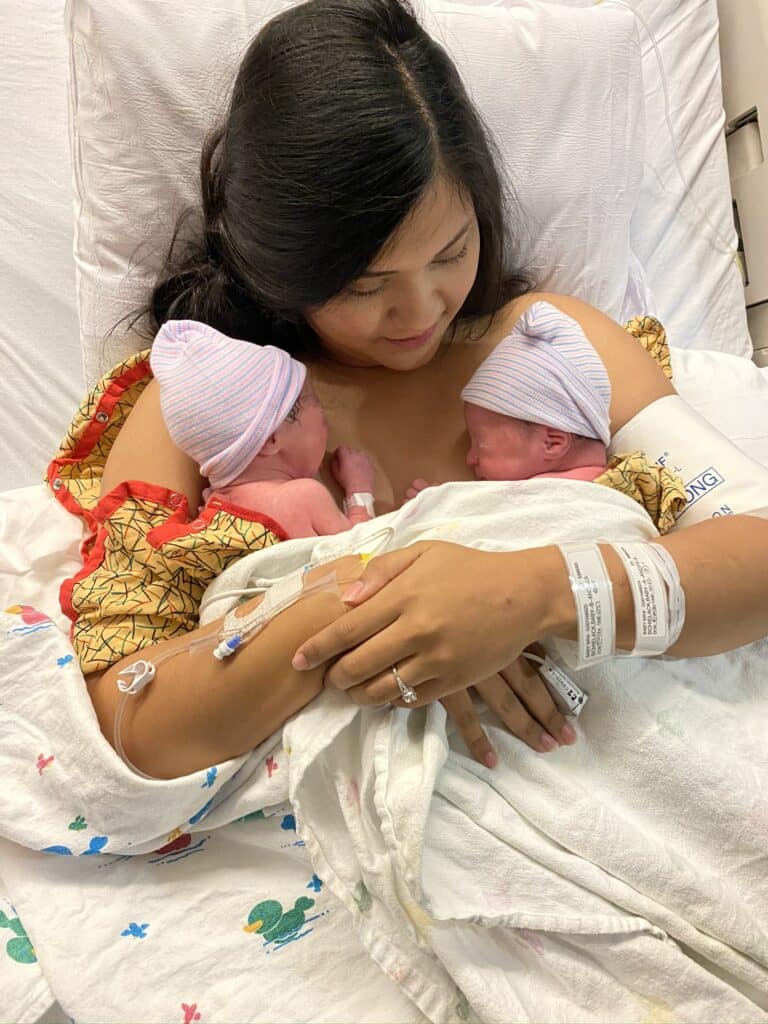
Bleeding
Your bleeding will continue during this initial week after delivery. Although, it shouldn’t be quite as heavy as the first 48 hours. It will also change in color over time, going from heavy red blood to lighter pinkish or brownish blood.
After you use the hospital get-up they give you for the bleeding, I found disposable postpartum underwear to be the most comfortable in these first few days and weeks.
Your first bowel movement
The exact length of time it takes to poop post-c-section varies. It may take only a day or two after birth or it could take upwards of a week before you’re able to poop.
Either way, it’s likely to range from uncomfortable to downright excruciating. For me (excuse the overshare), it truly felt like I was pushing sharp diamonds out of my bottom. It was super painful. The pressure of pushing also caused some pain around the incision.
Drinking lots of water, consuming a healthy amount of fiber, and using stool softeners may lessen the pain of your first few BMs after your c-section.

Anal fissures and hemorrhoids
Up to 40% of women experience hemorrhoids and/or anal fissures after child birth. (One of my personal least favorite experiences of the entire recovery process, ouch!!).
Anal fissures are tiny tears in the lining of your anus, and hemorrhoids are swollen veins that form in the lower part of your rectum. Both of these can make going to the bathroom (especially #2) painful. They can also cause light bleeding around your anus. If you develop either of these, talk to your doctor about what you can do to treat the pain. But they will usually heal on their own with time.
Your incision
You are likely to continue to feel discomfort and/or pain around your incision for the first week or two. It will be especially noticeable when you are moving (which unfortunately you need to do to recover faster). It can help to make sure you have a low-laying bed or area to sleep and rest that doesn’t require you to stretch too much. And if you don’t have that, grab a stool that you can use to help hoist yourself into bed.
I didn’t realize how painful it would be to climb into my bed which was several feet off of the ground. Instead, I opted for a lower-laying couch that didn’t require me to swoop my legs up so high to climb in.
Your stomach
This holds true with vaginal deliveries too, but after a c-section, it will take several months (even years) for your stomach to go back down. It will go down some in the first few days after you expel some of the extra fluids you were retaining. But keep in mind that your body was housing two little humans for a long time. So the healing and shrinking process won’t happen overnight. Try your best to be gentle with yourself on this front.
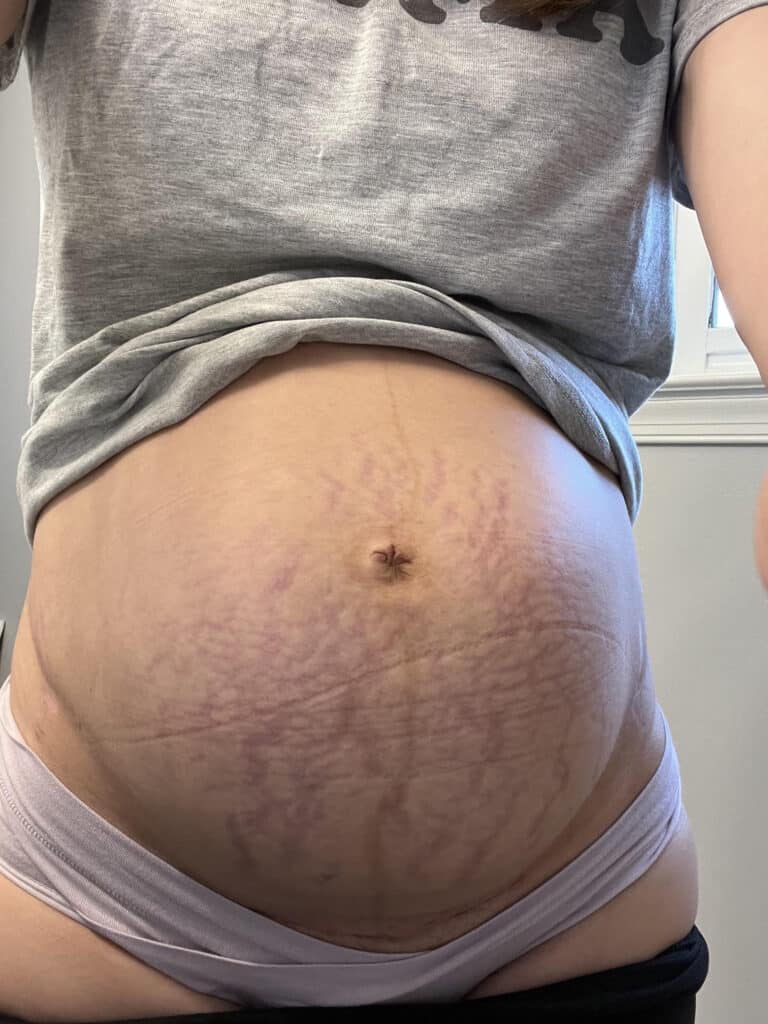
C-section recovery: the first two months after
Here are some additional things to know about with your first two months after a Cesarean delivery:
- Using a c-section belly band (abdominal binder) can help with the discomfort of walking around. It can also help protect your incision from getting bumped or scratched accidentally.
- You’ll have an in-person check up with your OB around 6 weeks after your c-section.
- Your doctor will tell you to refrain from sex (and any other vaginal penetration like tampons, etc.) until around 6 weeks after delivery. Although, once you get the “okay,” don’t feel bad if you don’t feel ready for sex or intimacy yet.
- Your doctor will also give you guidance on when you can begin exercising again.
- If you’re not nursing, expect to see the return of your period around 6 – 8 weeks. But if you are pumping or breastfeeding, you may not notice the return of your period until a few weeks after you stop.
- At this point, your bleeding may still be present, but it should be getting lighter and lighter over time.
- If you experienced any sort of birth trauma or are struggling mentally postpartum, it’s a good idea to seek help from a mental health professional.
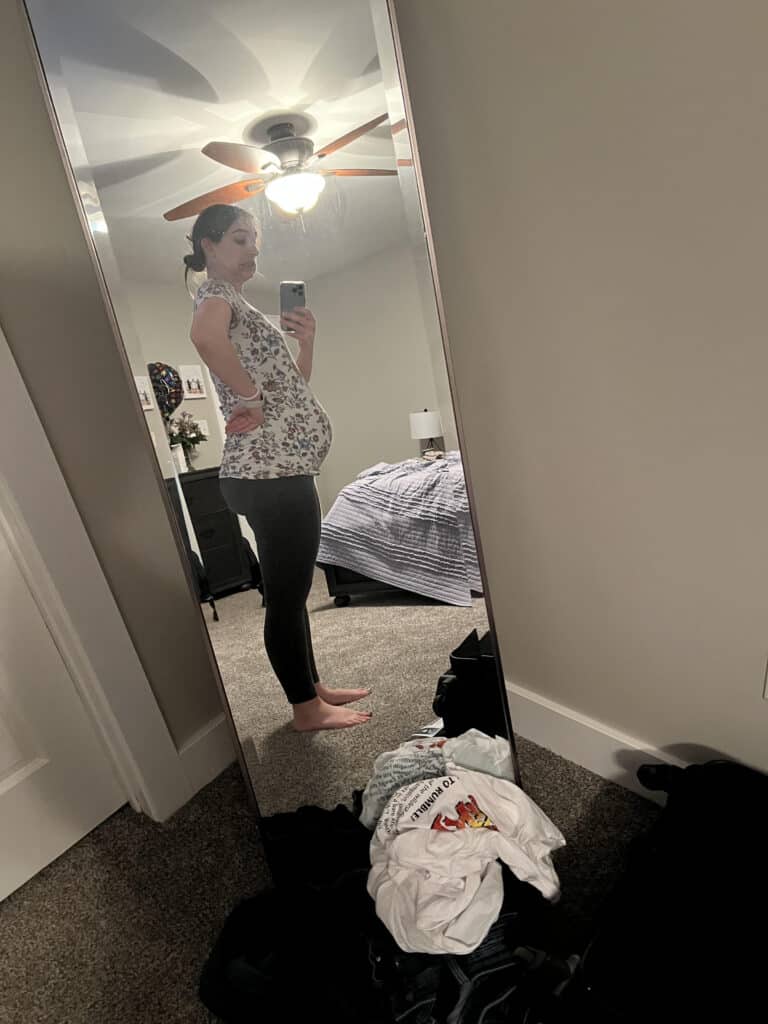
When to call the doctor after your c-section with twins?
Keep in mind that a c-section is major surgery. So even though you have two little ones to care for now, be sure to take care of yourself by paying attention to your body and recovery.
If you notice any of the following symptoms after your c-section, talk to your doctor ASAP:
- Intense pain
- Painful urination or leaking pee
- Vaginal bleeding that is super heavy (soaking a pad in less than an hour or large clots)
- Any pain or swelling in your lower leg
- Swelling, redness, or discharge around your incision
- Shortness of breath
- Fever or chills
In some cases, these symptoms could be a sign of infection or another complication. So seek medical attention right away.
Want to know even more about having a c-section with twins? Check out these too:
- C-section Prep Tips for Your Twin Delivery
- C-section Breakdown: What to Expect If You Have a C-section
- What to Expect When You’re Expecting a C-section

Paige Figueroa is a mom to fraternal twins. After teaching English for 9 years, she now works from home as a content marketing strategist and entrepreneur so she can spend more time with her children. She loves helping other moms and women enjoy more freedom in their lives by monetizing their passions. You can follow her on IG and TikTok @mombossfreedom.

